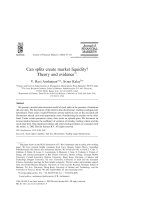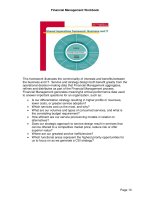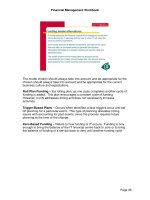Econometric theory and methods russell davidson and james g mackinnon
Bạn đang xem bản rút gọn của tài liệu. Xem và tải ngay bản đầy đủ của tài liệu tại đây (5.33 MB, 693 trang )
www.GetPedia.com
*More than 150,000 articles in the
search database
*Learn how almost everything
works
Chapter 1
Regression Models
1.1 Introduction
Regression models form the core of the discipline of econometrics. Although
econometricians routinely estimate a wide variety of statistical models, using
many different types of data, the vast majority of these are either regression
models or close relatives of them. In this chapter, we introduce the concept of
a regression model, discuss several varieties of them, and introduce the estimation method that is most commonly used with regression models, namely, least
squares. This estimation method is derived by using the method of moments,
which is a very general principle of estimation that has many applications in
econometrics.
The most elementary type of regression model is the simple linear regression
model, which can be expressed by the following equation:
yt = β1 + β2 Xt + ut .
(1.01)
The subscript t is used to index the observations of a sample. The total number of observations, also called the sample size, will be denoted by n. Thus,
for a sample of size n, the subscript t runs from 1 to n. Each observation
comprises an observation on a dependent variable, written as yt for observation t, and an observation on a single explanatory variable, or independent
variable, written as Xt .
The relation (1.01) links the observations on the dependent and the explanatory variables for each observation in terms of two unknown parameters, β1
and β2 , and an unobserved error term, ut . Thus, of the five quantities that
appear in (1.01), two, yt and Xt , are observed, and three, β1 , β2 , and ut , are
not. Three of them, yt , Xt , and ut , are specific to observation t, while the
other two, the parameters, are common to all n observations.
Here is a simple example of how a regression model like (1.01) could arise in
economics. Suppose that the index t is a time index, as the notation suggests.
Each value of t could represent a year, for instance. Then yt could be household consumption as measured in year t, and Xt could be measured disposable
income of households in the same year. In that case, (1.01) would represent
what in elementary macroeconomics is called a consumption function.
Copyright c 1999, Russell Davidson and James G. MacKinnon
3









